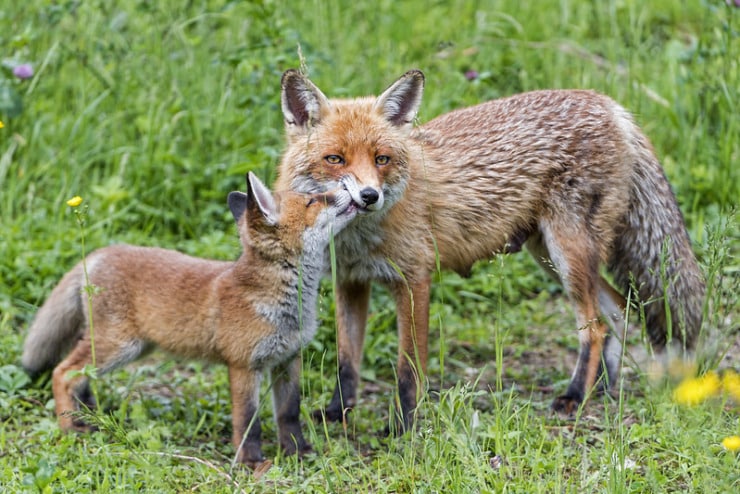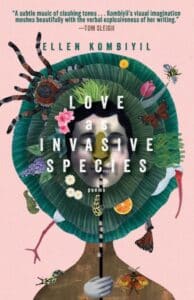
Love as an Invasive Species: Poems by Ellen Kombiyil packs a powerful punch. Collectively, the 40 poems are a story about women, working-class women who often find life stacked against them but keep fighting for themselves and their families.
The collection is evenly divided into two “sides,” Side A and Side B, a reminder of an old 45 rpm record. The book is designed as a double book, so you read Side A, flip the book to the back cover, turn it upside down, and read Side B. The poems on each side correspond to each other in the order they’re in.
You read of family experiences, screwed-up birthdays, school experiences, dishes broken at an employer’s home, swimming lessons, breakfasts, coming home late from a party, joyrides to the beach, funerals and wakes, and even trash nights. You experience something familiar, and yet the familiar is slightly, or more than slightly, off. These are stories of struggle, often painful, and survival, sometimes wounded.
Side B includes a poem that is also a two-page family chronology, encompassing the years from 1897 to 2020. The women, and the chronology is entirely of women, need to be named; their experiences contributed to the life of the poet telling the stories.
What do you do when it’s your mother’s birthday, and she wants flowers? You buy tiger lilies, and you tell a story of abandonment and yet hope. From Side A:
No Money for Boots: Love as Uprooted Flora

So you stomped through snow
to the florist’s beige counter, tiled floor.
Tiger lilies. No dull
white for her, no pink tongue center
yanked fresh from a mountain path.
It was six years since Daddy
plucked the spark plugs and left.
Lilies you
nearly crushed
getting back,
bare legs bright red
like knuckles, simultaneously
snow-wet and bled. And stars in snowdrifts
glittered. Not stars but tiny crystals
moved as you moved down the block, a wave of stars
followed you home
and the stems
gone bent
and you not broken
The corresponding poem in Side B is the title poem, “Love as an Invasive Species.” It’s about the escape of a pet tarantula, which is almost found but manages to finally elude its pursuers. You either move or learn to live with it – another kind of abandonment and another kind of hope.

Ellen Kombiyil
Kombiyil takes your far out of your comfort zone with Love as an Invasive Species. The poems can often be gritty and unsettling, and yet you know that, as you read them, they’re also life. You realize how much courage these women have to face abandonment, tragedy, trauma, and suffering and still demonstrate resilience.
Photo by Tambacko the Jaguar, Creative Commons, via Flickr. Post by Glynn Young.
How to Read a Poem uses images like the mouse, the hive, the switch (from the Billy Collins poem)—to guide readers into new ways of understanding poems. Anthology included.
“I require all our incoming poetry students—in the MFA I direct—to buy and read this book.”
—Jeanetta Calhoun Mish
- Longfellow’s “Paul Revere’s Ride”: Creating a National Legend - April 17, 2025
- Poets and Poems: Katie Kalisz and “Flu Season” - April 15, 2025
- Poets and Poems: Michelle Ortega and “When You Ask Me, Why Paris?” - April 10, 2025

Leave a Reply